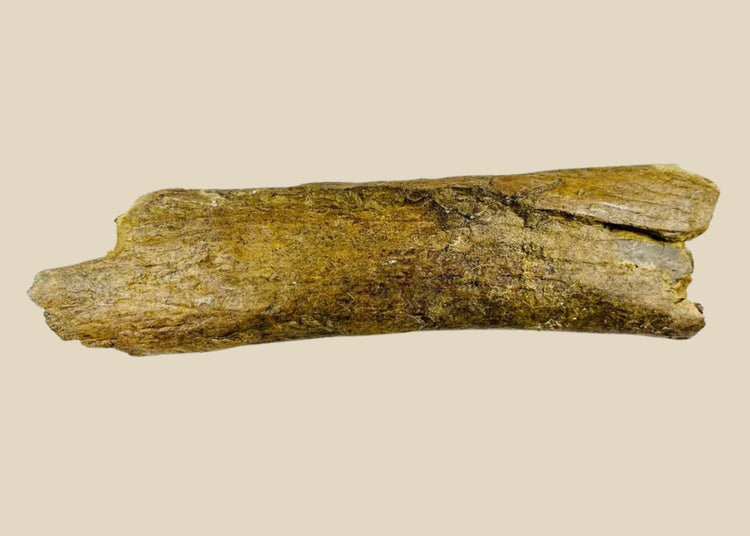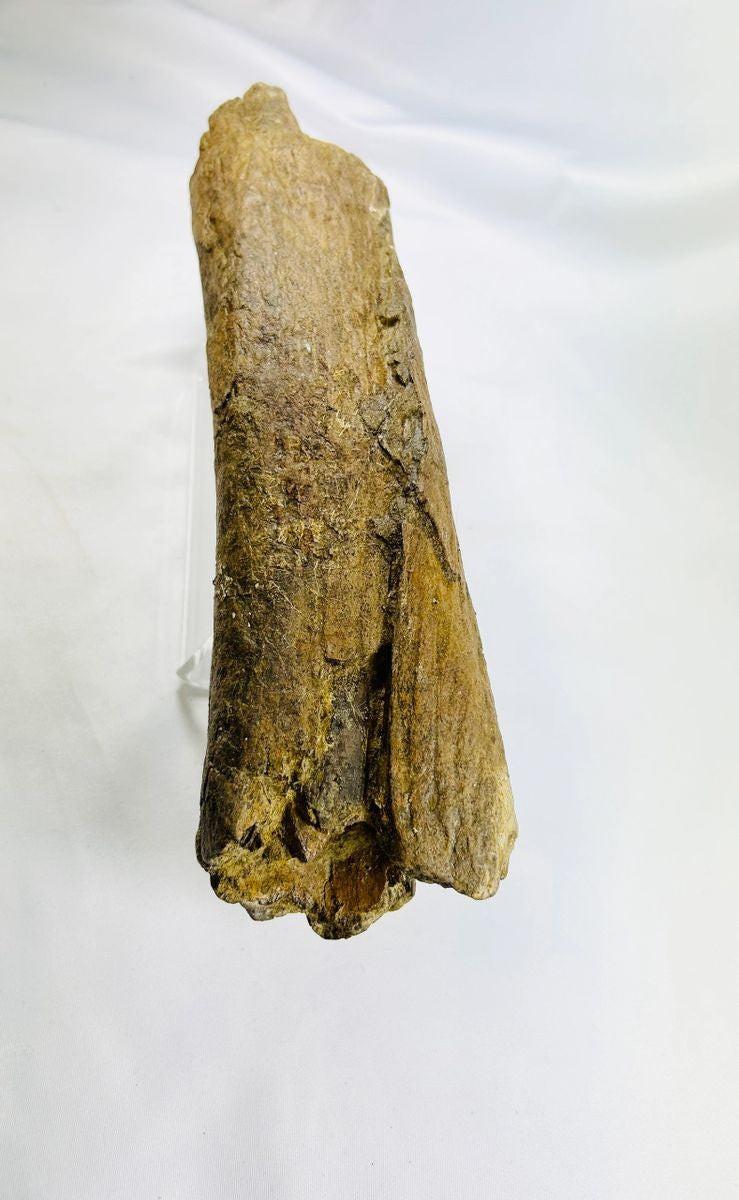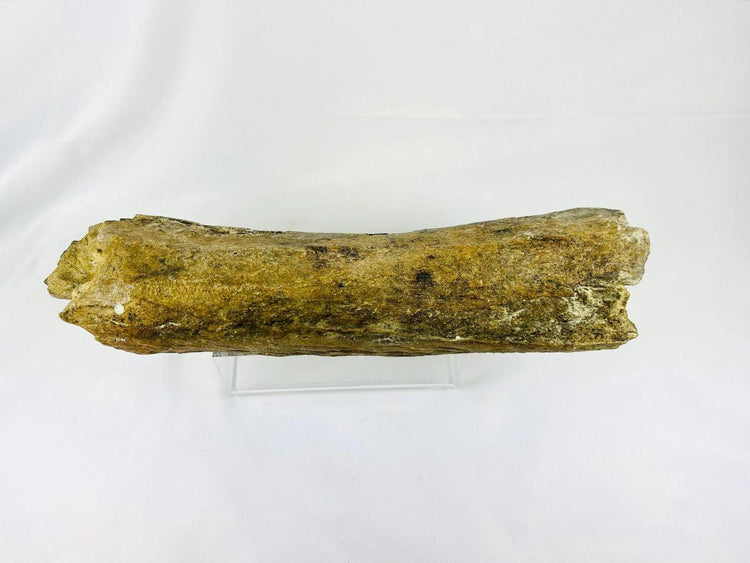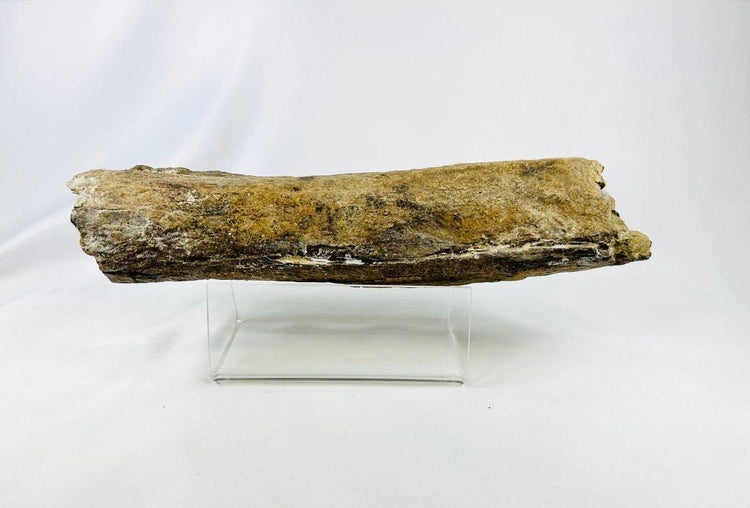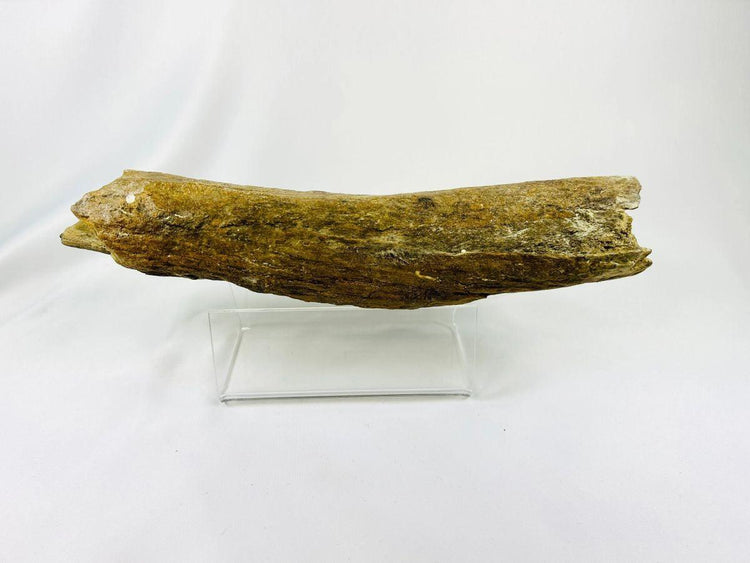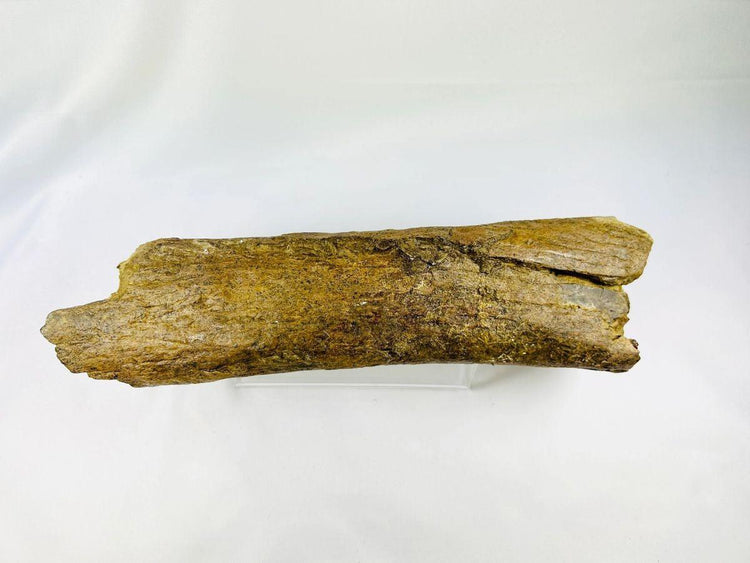Cretaceous Dinosaur Fossil | Theropod (Raptor-Type) Bone | Wyoming USA | Circa 100–89 MYA
Description
More
Less
Historical Context & Origin
Region: Wyoming, United States
Material: Fossilized bone
Period: Cretaceous Period (circa 100–89 million years ago)
Description
This remarkable 11-inch-long theropod dinosaur bone, often referred to as belonging to a “raptor,” is a well-preserved specimen from the Cretaceous Period. Collected in Wyoming, a region world-renowned for its fossil deposits, the bone represents a genuine relic of the age when predatory theropods dominated prehistoric ecosystems. Its mineralized structure, rich coloration, and surface integrity make it both a scientifically significant specimen and a visually striking display piece.
Features
- Fossilized theropod bone, 11 inches in length
- Distinct mineralization and structural preservation
- Collected in Wyoming, USA – a major paleontological site
- Natural coloration enhancing authenticity and display value
Cultural & Scientific Significance
Theropods were bipedal carnivorous dinosaurs that ranged from small, agile species such as dromaeosaurs (raptors) to apex predators like Tyrannosaurus. Their hollow bones, sharp claws, and serrated teeth made them highly effective hunters. Fossils like this offer direct insight into the Cretaceous ecosystems of North America, when dinosaurs were the dominant terrestrial life forms. Such specimens are prized not only for their rarity but also for the role they play in advancing our understanding of prehistoric life.
Condition
Well-preserved with strong mineralized integrity and natural coloration. Wear consistent with great geological age enhances its authenticity.
Dimensions (approximate)
Length: 11 in
Age
Cretaceous Period (circa 100–89 million years ago)
Description
Historical Context & Origin
Region: Wyoming, United States
Material: Fossilized bone
Period: Cretaceous Period (circa 100–89 million years ago)
Description
This remarkable 11-inch-long theropod dinosaur bone, often referred to as belonging to a “raptor,” is a well-preserved specimen from the Cretaceous Period. Collected in Wyoming, a region world-renowned for its fossil deposits, the bone represents a genuine relic of the age when predatory theropods dominated prehistoric ecosystems. Its mineralized structure, rich coloration, and surface integrity make it both a scientifically significant specimen and a visually striking display piece.
Features
- Fossilized theropod bone, 11 inches in length
- Distinct mineralization and structural preservation
- Collected in Wyoming, USA – a major paleontological site
- Natural coloration enhancing authenticity and display value
Cultural & Scientific Significance
Theropods were bipedal carnivorous dinosaurs that ranged from small, agile species such as dromaeosaurs (raptors) to apex predators like Tyrannosaurus. Their hollow bones, sharp claws, and serrated teeth made them highly effective hunters. Fossils like this offer direct insight into the Cretaceous ecosystems of North America, when dinosaurs were the dominant terrestrial life forms. Such specimens are prized not only for their rarity but also for the role they play in advancing our understanding of prehistoric life.
Condition
Well-preserved with strong mineralized integrity and natural coloration. Wear consistent with great geological age enhances its authenticity.
Dimensions (approximate)
Length: 11 in
Age
Cretaceous Period (circa 100–89 million years ago)
You May Also Like




















